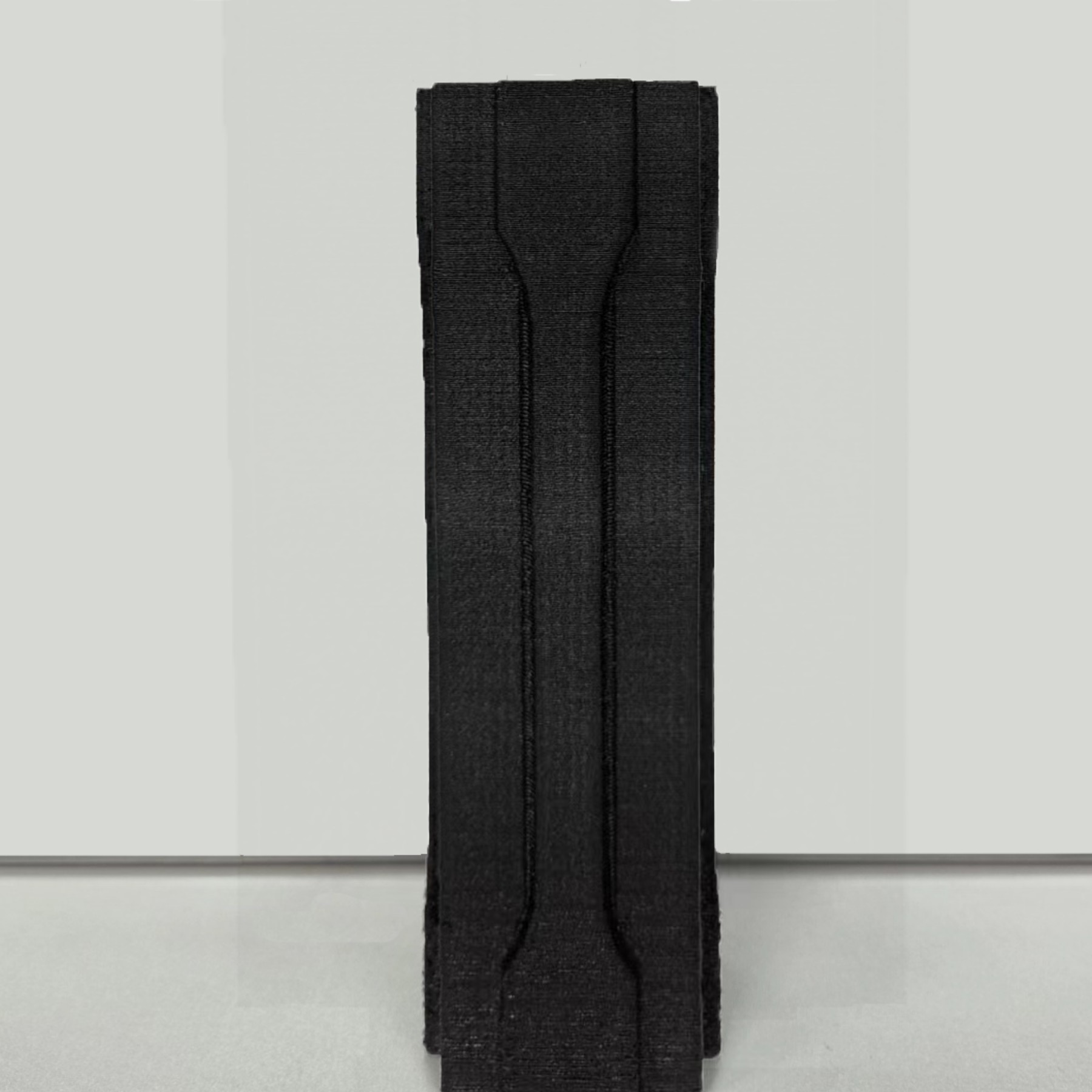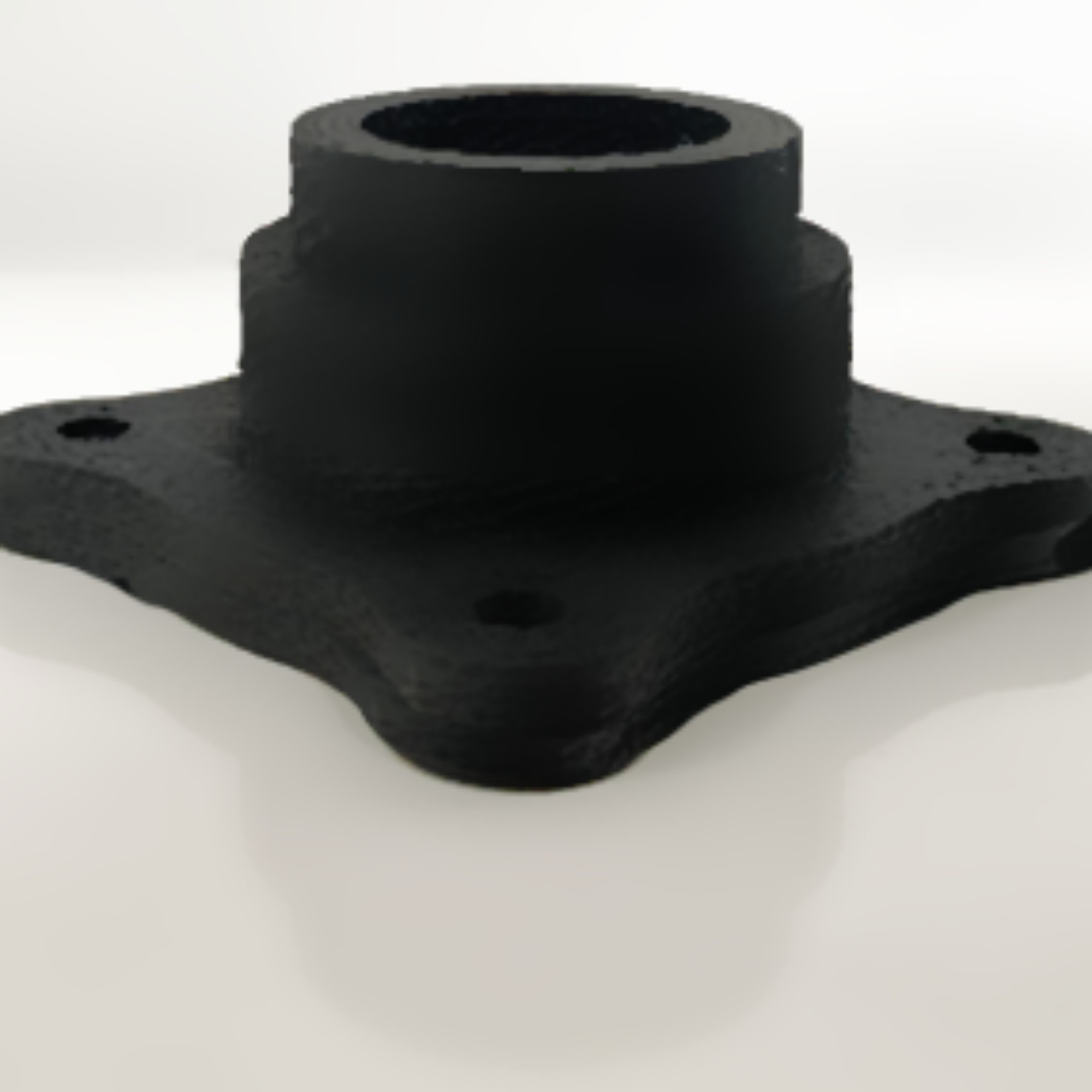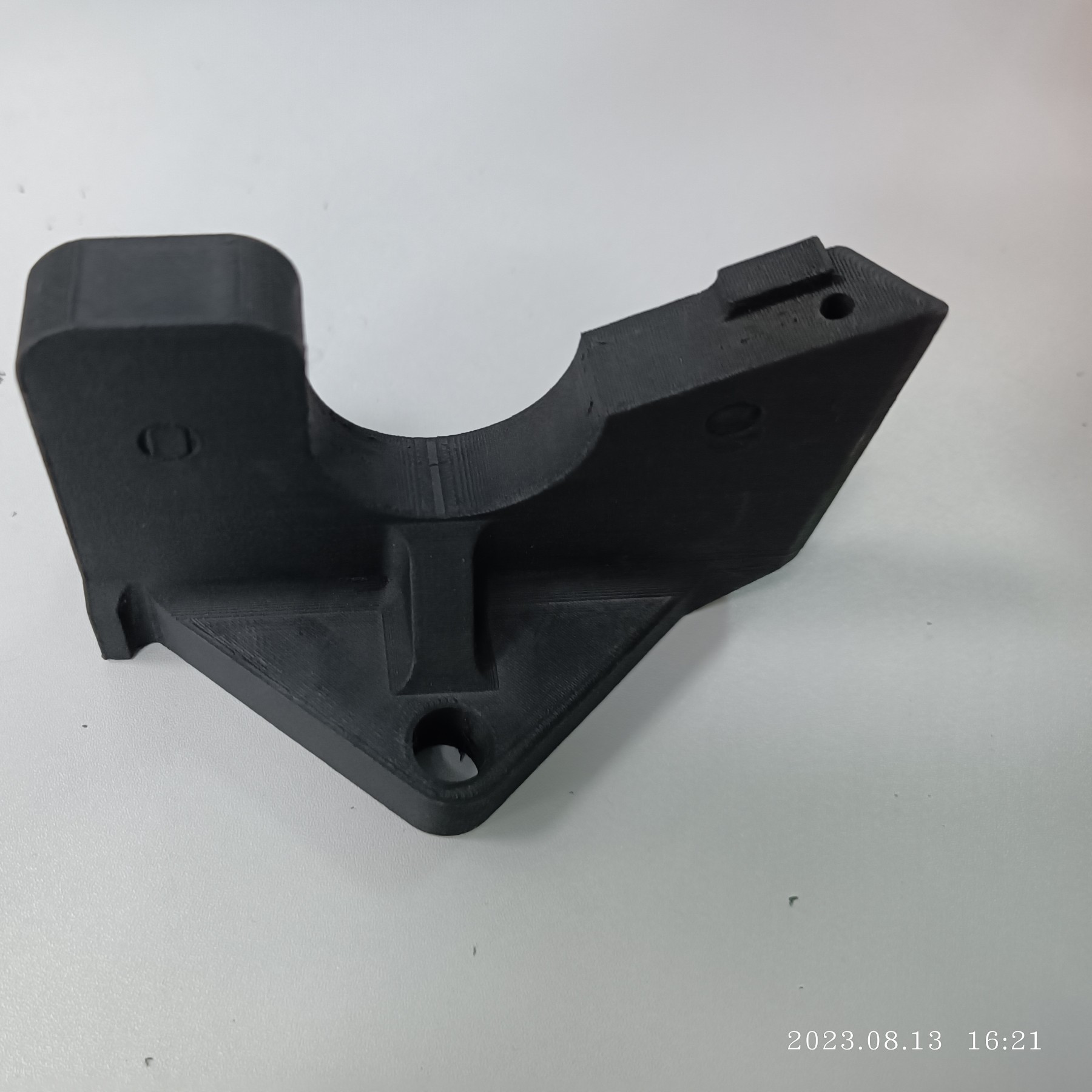While 3D printing equipment continues to be upgraded and iterated, Chaoling Intelligence also focuses on the research and development and expansion of 3D printing materials to meet the different needs of customers. While constantly expanding the types of printing materials and optimizing material formulas, we also dig deep into application scenarios to empower different industries.
PLA-CF 3D printing performance parameters performance Property numerical value Parameter Value unit Unit Test Methods Test Method Young's modulus Tensile modulus 1413 MPa ISO 527, Type 1A Tensile Strength Tensile strength 66 MPa ISO 527, Type 1A Elongation at break 15 % ISO 527, Type 1A Flexural modulus Bend modulus 2127 MPa ISO 14125 Bending strength Bend strength 96 MPa ISO 14125 Notched impact strength 8 kj/㎡ ISO 180 Heat distortion temperature HDT ~70 ℃ ISO 75-1,2 Glass transition temperature/Tg 60 ℃ ISO 11357-2 Melting temperature Tm 155-170 ℃ ISO 11357-3 Particle printing temperature: 120-155℃ from feed to nozzle Drying temperature: 60-80℃ 3-6h PLA-GF 3D printing performance parameters performance Property numerical value Parameter Value unit Unit Test Methods Test Method Young's modulus Tensile modulus 1971 MPa ISO 527, Type 1A Tensile Strength Tensile strength 85 MPa ISO 527, Type 1A Elongation at break 9 % ISO 527, Type 1A Flexural modulus Bend modulus 2631 MPa ISO 14125 Bending strength Bend strength 136 MPa ISO 14125 Notched impact strength 9 kj/㎡ ISO 180 Heat distortion temperature HDT ~70 ℃ ISO 75-1,2 Glass transition temperature/Tg 60 ℃ ISO 11357-2 Melting temperature Tm 155-170 ℃ ISO 11357-3 Particle printing temperature: 120-155℃ from feed to nozzle Drying temperature: 60-80℃ 3-6h

